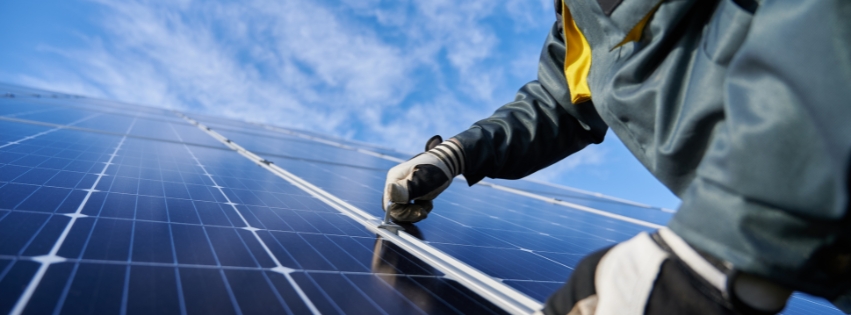Switching to solar energy is an exciting step towards reducing your electricity bills and embracing a more sustainable lifestyle. If you’ve chosen a solar installation on the Sunshine Coast, you might be wondering what to expect on the big day. From pre-installation checks to the final system handover, this guide will walk you through every stage of solar installation and what happens after your system is up and running.
Before Installation Day: Preparing for Solar
Before your solar installation begins, your installer will complete several important steps to ensure the process runs smoothly:
1. Site Assessment and System Design
Once you’ve decided to install solar panels, your chosen provider will conduct a site assessment. This involves:
- Checking your roof’s orientation, angle, and condition.
- Assessing any shading issues from trees or nearby structures.
- Determining the best panel layout for maximum efficiency.
- Confirming electrical requirements and inverter placement.
After this, your solar installer will design a system tailored to your energy needs, roof space, and budget.
2. Permits and Approvals
Solar installations in Queensland require approvals from local councils and energy providers. A reputable installer will handle these applications for you, ensuring compliance with regulations. If you’re applying for solar rebates or incentives, your installer may also assist with the paperwork.
3. Scheduling the Installation
Once approvals are in place, your installation date will be scheduled. Most residential solar installations on the Sunshine Coast will take just one day, though larger or more complex systems may take longer.
What Happens on Installation Day?
On the day of your solar installation, a team of qualified electricians and solar technicians will arrive to set up your system. Here's what you can expect:
3. Electrical Wiring and Inverter Installation
The electrical team will then install the wiring and connect your solar inverter, which converts the DC electricity from your panels into usable AC power for your home. The inverter is typically mounted on a wall near your switchboard or in a garage or shaded area to ensure longevity.
4. Connection to the Grid
For grid-connected solar installations on the Sunshine Coast, your system needs to be integrated with the electrical grid. Your installer will:
Connect the solar system to your home's switchboard.
Install a bi-directional meter (if required) to measure energy exported to the grid.
Perform safety checks and initial system testing.
After Installation: What Comes Next?
1. System Activation and Monitoring
After your installation, your solar provider will guide you through the system’s operation. This includes:
- How to monitor energy production via an app or web portal.
- Understanding your feed-in tariff (the rate you earn for sending excess solar power to the grid).
- General maintenance tips to keep your system running efficiently.
2. Approval and Connection to the Grid
Although your system may be ready to generate power, your energy provider must approve its connection to the grid. This process typically takes a few days to a couple of weeks. Once approved, you can start benefiting from solar energy savings and exporting excess electricity.
3. Routine Maintenance and Care
To enhance the longevity and efficiency of your solar system panels, regular maintenance is recommended:
- Cleaning: Dust and dirt can reduce panel efficiency. Cleaning your panels every six months (or after heavy storms) helps maintain performance.
- Inverter Checks: Ensure your inverter is functioning properly by regularly monitoring the display for error messages.
- Professional Inspections: Having your system inspected every 2–3 years by a professional can help detect issues early.
4. Understanding Your Energy Usage
Once your solar installation is operational, tracking your energy usage can help you maximise savings. Consider:
- Running high-energy appliances (such as washing machines and dishwashers) during peak sunlight hours.
- Opting for solar batteries to store surplus energy for nighttime use.
- Reviewing your electricity bills to see how much you’re saving with solar.
How to Choose a Professional for Solar Installation on the Sunshine Coast?
A quality solar installation ensures maximum efficiency, longevity, and compliance with Australian standards. When choosing a provider, look for:
✔ CEC Accreditation – Ensures the installer meets industry standards.
✔ Quality Products – Tier 1 solar panels and reputable inverters for better performance.
✔ Strong Warranty Terms – Long-term warranties on panels, inverters, and workmanship.
✔ Local Expertise – Installers familiar with Sunshine Coast conditions and regulations.
Final Thoughts: Enjoying the Benefits of Solar
A solar installation is a smart investment, offering long-term energy savings and environmental benefits. Installation day is a straightforward process when handled by skilled professionals, and with proper maintenance, your system can provide clean, renewable energy for decades.
Ready to make the switch? Contact TMEC Services, a trusted solar installer on the Sunshine Coast today and start harnessing the power of the sun! ☀🔋
To learn more about solar panels and how they can benefit your home, visit Australian Renewable Energy Agency (ARENA)


